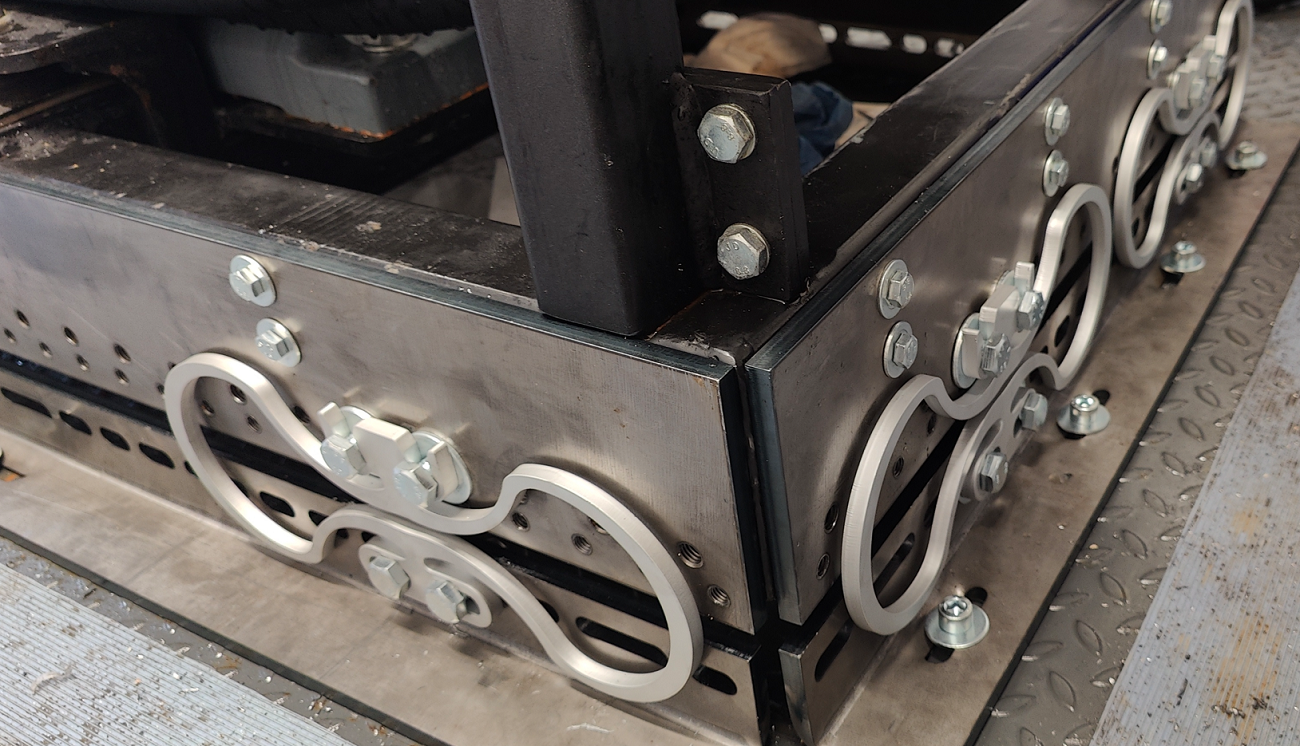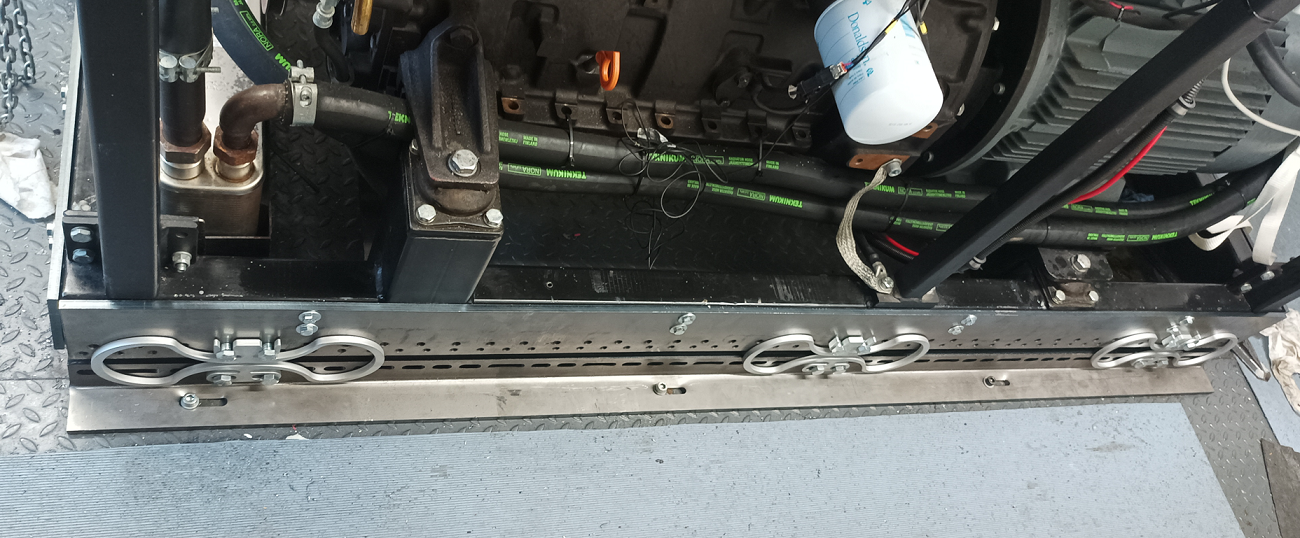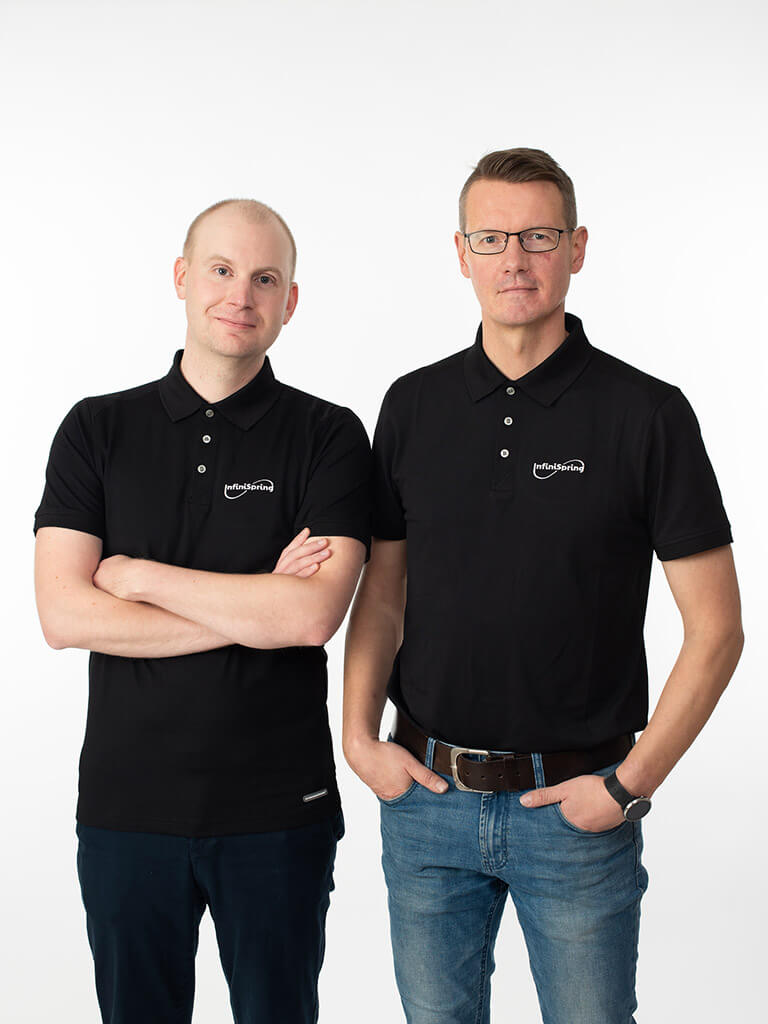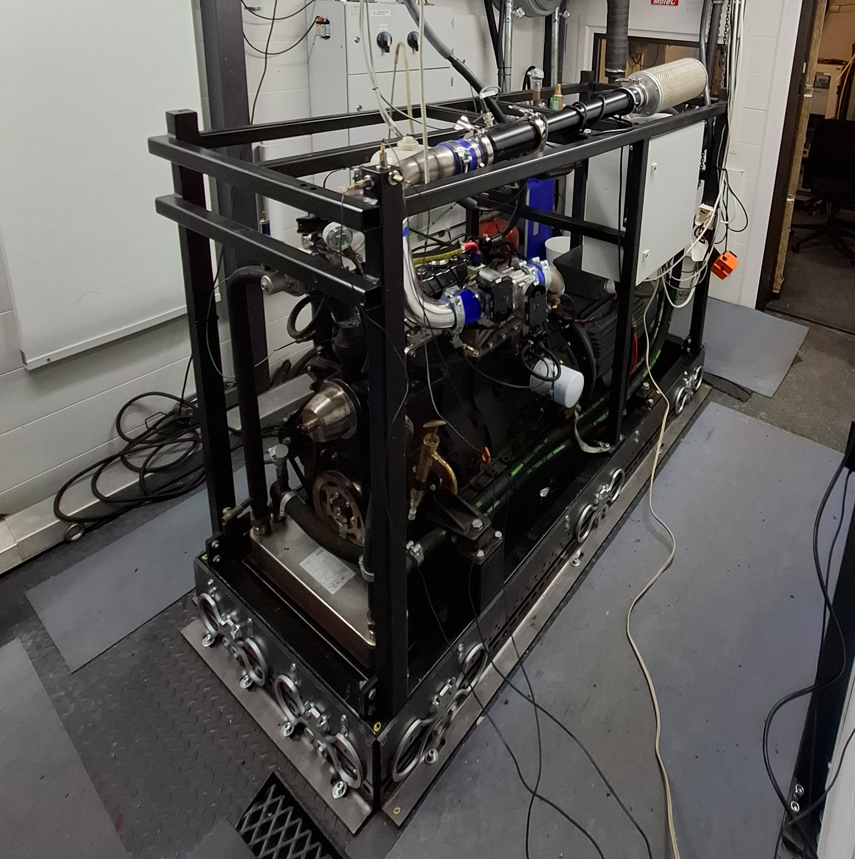18.08.2025
Introduction
InfiniSpring® technology was implemented in a CASEMATE Business Finland research project involving an AGCO Power internal combustion engine-generator set, operated by Global Boiler Works Oy (GBW). The project, led by the University of Oulu, formed the basis of a Master’s Thesis by Benjamin Timonen, supervised by Antti Korpela (GBW).
Original Setup and Modification
The engine-generator set was originally rigidly mounted to the floor of a test container. As part of the CASEMATE project, InfiniSpring® springs were dimensioned and installed between the engine-generator set and the container floor to reduce vibration transmission to the surrounding structure.

Notably, the engine-generator set remained unmodified. The InfiniSpring® springs were added externally, making the upgrade both straightforward and non-invasive.
Spring Selection and Load Matching
- Engine-generator set weight: ~1100 kg
- Springs used: 10 × InfiniSpring® 8HS130
- Load capacity per spring: 100–130 kg
- Total supported load range: 1000–1300 kg
This configuration matched the system’s weight perfectly, ensuring optimal isolation performance.

Datasheet with standard spring sizes is available on our webpages: InfiniSpring Datasheet
Design and Simulation
- Design of mounting rails for spring installation
- Development of a simulation model using AVL Excite™
- Vibration measurements and comparison with simulation results
The simulation revealed the following rigid body natural frequencies for the isolated system:
| Mode | Frequency (Hz) |
| Transversal | 3.7 |
| Longitudinal | 5.2 |
| Vertical | 7.7 |
| Yawing | 7.3 |
| Rolling | 8.0 |
| Pitching | 9.0 |
Isolation Performance
The critical isolation frequency is calculated as:
f_c = √2 · f_N
For vertical natural frequency of 7.7 Hz:
f_c = √2 · 7.7 Hz ≈ 10.9 Hz (653 rpm)
This means the spring installation begins isolating vibrations above 653 rpm. Vibration tests were conducted at operational speeds between 1000 rpm (16.7 Hz) and 2000 rpm (33.3 Hz).
Transmissibility and Isolation Efficiency
Transmissibility (T) is calculated using:
T = √(1 + (2ζr)^2) / √((1 – r^2)^2 + (2ζr)^2)
Where:
- r = Ω / f_N
- ζ = 0.01
Example:
At 2000 rpm (33.3 Hz), vertical natural frequency = 7.7 Hz
r = 33.3 / 7.7 ≈ 4.325
T ≈ 0.057
F_T = T · F_0 = 0.057 · 100 N = 5.7 N
Isolation efficiency: (1 – T) · 100 = 94.3%
Excitation Orders and Isolation
At 2000 rpm, the engine generates excitations at half-order intervals. Below is a summary of vertical direction transmissibility and isolation percentages:
| Order | Frequency (Hz) | Transmissibility | Isolation (%) |
| 0.5 | 16.7 | 0.27 | 73.0 |
| 1 | 33.3 | 0.06 | 94.3 |
| 1.5 | 50.0 | 0.02 | 97.6 |
| 2 | 66.7 | 0.01 | 98.6 |
| 2.5–5 | 83.3–166.7 | ≤0.01 | ≥99.1 |
Installation Summary
- Spring selection: 10 × InfiniSpring® 8HS130 for 1100 kg
- Installation: Springs placed symmetrically around the center of gravity for balanced load distribution and optimal isolation
Customer Feedback
Marko Jokinen, CEO of GBW, noted a tangible improvement in vibration levels: “I could feel the difference between the original stiff installation and the resilient InfiniSpring® setup from my office next door.”
Future Development
Future improvements may include integrating spring geometries directly into the steel support frame, eliminating the need for separate spring components and simplifying installation.
The full MSc Thesis (in Finnish) is available via the University of Oulu portal:
Polttomoottorigeneraattorin värähtelynvaimennuksen asentaminen ja simulointi
CASEMATE project:





